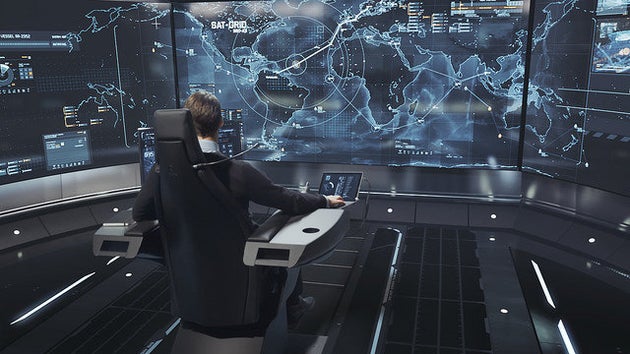There are about 80,000+ ocean-going ships and all the ships are operated by a competent crew with stringent training and experience. While the world is moving towards “Big-Data” and humans creating humanoids, shipping is expected to witness more of such new technology introductions.
Can you imagine a ship with no crew onboard, where the entire operations are being remotely-controlled from shore?
Yes! Remote-controlled ships could hit the high seas within a decade.
While they might end up putting sailors out of a job, fully autonomous boats could help the fossil fuel-hungry shipping industry drastically slash its carbon emissions.
IMO and other climate organizations have been hard on shipping to restrict emission and thereby the carbon footprint. Many companies have taken efforts to reduce carbon footprint by ‘Nose jobs and tailspins’. While these modifications would incur huge investments and a considerable payback time, there is a different school of thought floating around whereby ships would be remotely controlled within a decade.
Staffing a ship with a full crew requires lots of energy. Sailors need food, water, onboard sewage treatment facilities, air conditioning and heating. All these comforts along with the crew/utilities add weight to the vessel, slowing it down. Without a crew on board, a cargo ship could run on 10 to 15 percent less fuel and cut its carbon emissions by a similar percentage, according to Oskar Levander, vice president for innovation at Rolls Royce, which is developing autonomous ships with researchers at VTT Technical Research Centre of Finland.

Isn’t this stunning?
Ahoy sailors. While you must be thinking about losing your job, on the other end, be rest assured, there could be more technologically advanced jobs popping out. Wouldn’t be nice if you can control a ship from shore thereby be with your family?
“The primary benefits of remote and autonomous vessels will be improved efficiency and safety,” Levander told the blog Climate Home. “Obviously, anything that makes ships more efficient in terms of energy consumption also has the potential to reduce emissions.”
The first driverless boats were developed by the United States Navy and tested in 2014. The Navy designed its fleet of remote-controlled “swarm boats” to carry out risky missions without a crew, keeping sailors away from the line of fire.
Driverless cargo ships, by contrast, would be responsible mostly for steaming across the ocean, docking, loading or unloading cargo, then steaming on to the next port. And Rolls-Royce says its researchers are perfecting the technologies needed to remotely steer ships through the high seas.
For large cargo ships, cutting carbon emissions can be tough. Most ships still rely on bunker fuel, the heaviest, dirtiest fuel on the market. In an effort to cut fuel consumed by ships to complete their journey, they’re testing high-tech sails, streamlined hulls and “bulbous bows,” which reduce drag as ships slice through the water.
Rolls Royce’s remote-controlled ship is only the latest in a string of efforts to improve ship efficiency. It remains to be seen how well it actually works. Until this year, cargo ships didn’t have to report how much fuel they used. Companies that wanted to hire efficient ships weren’t able to charter those vessels simply because they didn’t know how much fuel each ship burned.
That changed in April when the International Maritime Organization adopted a measure requiring ships weighing more than 5,000 metric tons to report how much fuel they use.
“Once we’ve measured fuel burn of ships, then maybe we could have an efficiency standard,” Hemming said. “If you have autonomous ships that are efficient, they would fare well under that regime.”
By
Casey Williams
Editorial Fellow, The Huffington Post
What do you think about this futuristic technology?
With lots of bunker fuels causing shipboard problems and engine breakdown – do you think autonomous ships would be the real future?
To watch video, please click here
Voice out your comments and share your views
















